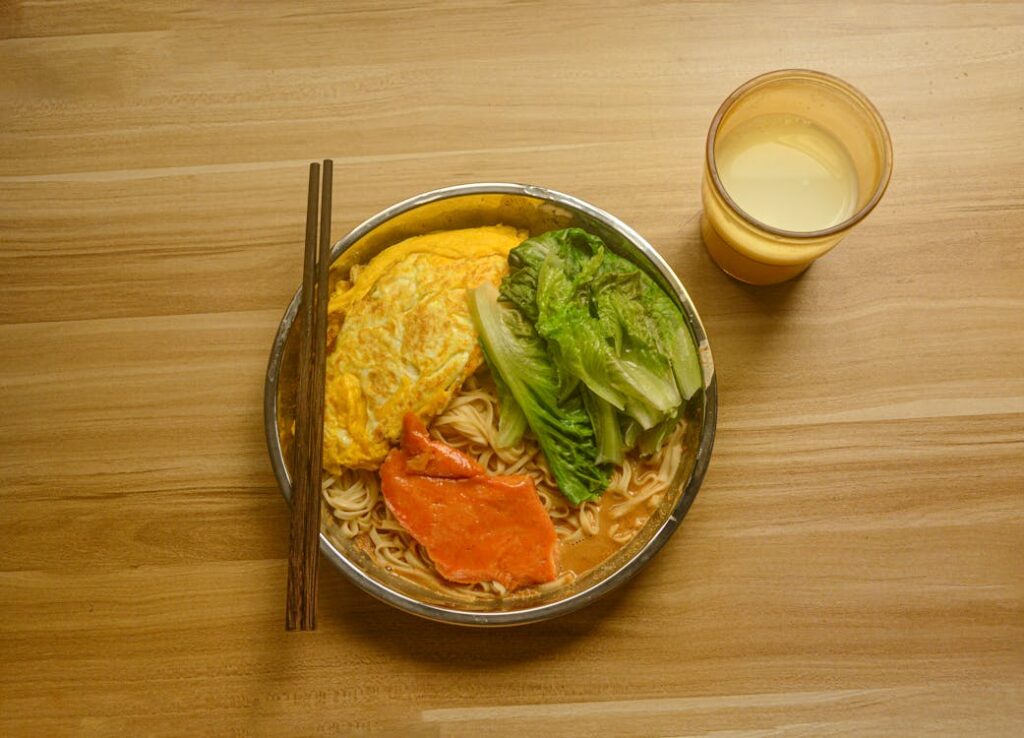Protein plays a vital role in healing, rebuilding muscles, and maintaining overall strength after an amputation. The body undergoes many changes following limb loss, and proper nutrition is essential to support recovery and long-term health. Since amputees experience shifts in metabolism, muscle mass, and mobility, their protein requirements are often different from those of non-amputees.
Many people wonder how much protein is needed for optimal recovery and whether too much or too little can affect their progress. The right balance depends on factors such as activity level, muscle loss, prosthetic use, and overall health goals. Without enough protein, the body may struggle with wound healing, muscle maintenance, and energy levels. On the other hand, excess protein without proper balance may not provide additional benefits.

The Role of Protein in Recovery After Limb Loss
Protein is one of the most important nutrients for amputees because it supports multiple aspects of recovery and overall health.
After an amputation, the body undergoes a period of healing that requires higher amounts of protein to repair tissues, strengthen muscles, and maintain proper immune function.
Every movement, from standing up to using a prosthetic limb, depends on muscle strength, and without enough protein, the body may struggle to rebuild lost muscle mass.
How Protein Helps with Wound Healing and Tissue Repair
After surgery, the body focuses on repairing tissues, forming new skin, and preventing infections. Protein provides the necessary building blocks for these processes, helping to form new cells and accelerate healing.
The amino acids found in protein play a key role in collagen production, which is essential for strong, flexible skin and scar formation. Without adequate protein, wound healing can slow down, increasing the risk of complications.
The body also requires protein to produce antibodies and enzymes that fight infections. Since amputees may be more vulnerable to infections, particularly in the residual limb, maintaining a high-protein diet can help strengthen the immune system.
A well-functioning immune system ensures that minor wounds heal quickly and that the body remains strong during the rehabilitation phase.
Protein’s Impact on Muscle Strength and Mobility
One of the biggest changes after limb loss is the shift in muscle distribution. The remaining muscles work harder to compensate for the missing limb, leading to increased strain on certain areas.
For lower-limb amputees, the muscles in the intact leg, hips, and core become even more important for maintaining balance and mobility.
Upper-limb amputees rely more on their shoulders and back muscles to perform everyday tasks. Without enough protein, muscle recovery slows down, making movements more difficult and increasing fatigue.
When the body does not receive sufficient protein, it starts breaking down existing muscle tissue for energy. This leads to muscle loss, reduced strength, and a slower recovery process.
For amputees using a prosthetic limb, weak muscles can make it harder to walk, lift objects, or stay active. By consuming enough protein, the body is able to repair and maintain muscle tissue, ensuring that strength and endurance improve over time.
Protein and Metabolism Changes After Amputation
Limb loss affects metabolism, which can impact how the body processes and utilizes protein. Amputees often experience changes in energy expenditure due to differences in mobility, muscle mass, and activity levels.
Some individuals may need more protein to support increased physical effort, while others may need to adjust their intake to prevent unnecessary weight gain.
Metabolism plays a role in determining how efficiently the body uses protein for muscle repair and energy production. For amputees who are highly active or in the early stages of rehabilitation, protein needs are higher to support increased physical demands.
Those who are less active may still require moderate protein intake to prevent muscle loss and maintain overall health.
Understanding how the body responds to protein intake allows amputees to make informed dietary choices that support long-term mobility and well-being.
A balanced approach ensures that protein consumption matches individual needs, providing the necessary fuel for strength, healing, and energy.

Determining the Right Amount of Protein for Amputees
Protein needs vary from person to person, and amputees often require adjustments based on their recovery stage, activity level, and overall health.
Eating too little protein can lead to muscle loss, fatigue, and slower healing, while excessive protein intake without balance may not provide additional benefits.
Finding the right amount is key to maintaining strength, preventing weight fluctuations, and ensuring the body functions at its best.
Factors That Influence Protein Requirements
The amount of protein an amputee needs depends on several factors, including body weight, muscle mass, and daily movement. Those in the early stages of recovery after surgery often require more protein to support wound healing and prevent muscle breakdown.
As healing progresses and mobility improves, protein intake can be adjusted based on activity levels and rehabilitation goals.
For lower-limb amputees, daily movements such as walking or using a prosthetic limb require more effort, which increases the demand for protein.
The intact leg and supporting muscles must work harder to provide balance and stability, making muscle recovery a priority. Upper-limb amputees also need to focus on protein intake, especially if they rely more on one arm for daily tasks.
Strength training, using mobility aids, or lifting objects can put extra strain on the shoulders and back, requiring adequate protein for muscle repair.
Age and overall health also affect protein needs. Older individuals naturally experience a gradual decline in muscle mass, which makes protein intake even more important for maintaining strength and mobility.
Amputees with conditions such as diabetes or cardiovascular disease may have specific dietary needs, requiring a well-balanced approach to protein consumption.
How to Calculate Protein Needs for Amputees
One of the simplest ways to determine protein requirements is by considering body weight and activity level. General recommendations suggest that adults need between 0.8 to 1.2 grams of protein per kilogram of body weight per day.
However, amputees, especially those recovering from surgery or engaging in regular physical therapy, often need more—ranging from 1.2 to 1.8 grams per kilogram per day.
This ensures that the body has enough amino acids to repair tissues, rebuild muscle, and sustain energy levels.
For example, an amputee weighing 70 kilograms may need anywhere between 84 to 126 grams of protein daily, depending on physical activity and rehabilitation goals.
Someone who is highly active, such as an athlete or a person regularly using a prosthetic limb, may need protein closer to the higher end of that range.
On the other hand, a person with a more sedentary lifestyle may require a moderate intake to maintain muscle mass without excessive calorie consumption.
Protein intake should be spread throughout the day to maximize absorption and support consistent muscle recovery. Consuming protein-rich meals in the morning, afternoon, and evening helps provide a steady supply of nutrients to the body.
Eating a large portion of protein in one sitting does not offer the same benefits as distributing intake evenly across meals.
Balancing protein with other essential nutrients is equally important. Pairing protein sources with fiber, healthy fats, and complex carbohydrates ensures that the body receives a well-rounded diet that supports digestion, energy production, and overall health.
Proper hydration also plays a role in protein metabolism, as water is necessary for transporting nutrients and eliminating waste products from the body.

Best Sources of Protein for Amputees
Getting enough protein is not just about quantity but also quality. The type of protein consumed affects how well the body absorbs and utilizes it for recovery.
Amputees benefit most from high-quality protein sources that provide essential amino acids, support muscle repair, and help maintain overall strength. A combination of animal-based and plant-based proteins ensures a balanced diet that meets all nutritional needs.
Animal-Based Proteins for Muscle Repair
Animal-based proteins are considered complete proteins because they contain all the essential amino acids needed for muscle growth and tissue repair.
Lean meats such as chicken, turkey, and fish are excellent sources of high-quality protein. These foods provide not only protein but also important vitamins and minerals like iron and zinc, which are essential for immune function and wound healing.
Eggs are another great source of protein, as they are easy to digest and packed with essential amino acids.
Dairy products such as yogurt, cheese, and milk also contribute to protein intake while providing calcium, which supports bone health. For amputees who use a prosthetic limb, maintaining strong bones is crucial for balance and stability.
Fish, particularly fatty fish like salmon, mackerel, and sardines, offers the added benefit of omega-3 fatty acids.
These healthy fats reduce inflammation, support joint health, and improve circulation, all of which are important for amputees adjusting to new movement patterns. Including fish in the diet a few times a week can enhance recovery and prevent stiffness.
Plant-Based Proteins for Sustained Energy
Plant-based proteins are a valuable addition to any diet, especially for those who prefer vegetarian or vegan options. Legumes such as lentils, chickpeas, and black beans provide a good amount of protein along with fiber, which supports digestion and blood sugar regulation.
These foods help prevent energy crashes and keep the body fueled for daily activities.
Nuts and seeds, including almonds, walnuts, chia seeds, and flaxseeds, offer a combination of protein, healthy fats, and essential minerals.
These nutrients support brain function, reduce inflammation, and provide sustained energy throughout the day. Nut butters, such as peanut butter or almond butter, can be an easy way to incorporate protein into snacks or meals.
Whole grains such as quinoa, brown rice, and oats also contribute to protein intake while providing complex carbohydrates for long-lasting energy.
Quinoa is particularly beneficial because it is one of the few plant-based foods that contain all essential amino acids, making it a complete protein.
Soy-based foods like tofu, tempeh, and soy milk are excellent protein sources for vegetarians and vegans.
They offer a high protein content while being easy to digest and versatile in meals. Including a mix of plant-based proteins ensures that the body receives a broad spectrum of nutrients that support overall recovery.
Combining Protein Sources for Maximum Benefits
Eating a variety of protein sources helps ensure that the body gets all the essential amino acids needed for muscle repair and strength. Mixing animal-based and plant-based proteins in meals provides a balanced approach to nutrition.
For example, combining rice with lentils, adding nuts to yogurt, or pairing eggs with whole-grain toast can create well-rounded meals that support energy, recovery, and mobility.
The key is to make protein intake a consistent part of daily eating habits. Spreading protein consumption across meals, choosing nutrient-dense foods, and staying hydrated all contribute to optimal muscle function and overall well-being.
By selecting high-quality protein sources and balancing them with other essential nutrients, amputees can improve their strength, mobility, and long-term health.

Timing and Distribution of Protein Intake for Optimal Recovery
Eating enough protein is important, but when and how it is consumed also plays a crucial role in muscle recovery and overall health.
The body does not store protein in the same way it stores carbohydrates or fats, so regular intake throughout the day ensures a steady supply of amino acids for muscle repair and tissue maintenance.
Amputees benefit from a well-planned approach to protein distribution, helping to maintain energy levels, support mobility, and prevent muscle loss.
Why Spreading Protein Intake Throughout the Day Matters
The body can only absorb and utilize a certain amount of protein at a time. Consuming a large amount in one meal does not necessarily translate to better muscle growth or faster recovery.
Instead, spreading protein intake evenly across meals and snacks allows for continuous muscle repair and reduces the risk of muscle breakdown.
For amputees, who rely on specific muscle groups for stability and movement, maintaining a consistent supply of protein helps prevent fatigue and promotes endurance.
Eating a protein-rich breakfast kickstarts metabolism, fuels muscles for the day, and prevents early energy crashes.
A balanced lunch and dinner with adequate protein support tissue recovery and maintain strength, while small protein-rich snacks between meals help regulate hunger and maintain muscle mass.
Protein Needs Before and After Physical Activity
For amputees who engage in physical therapy, strength training, or regular movement, timing protein intake around activity can improve recovery.
Consuming a small amount of protein before exercise provides the muscles with amino acids needed for endurance and performance. This is particularly helpful for those using a prosthetic limb, as their muscles work harder to maintain balance and coordination.
After exercise or rehabilitation sessions, protein intake becomes even more critical. The muscles are in a state where they can absorb and use protein most efficiently for repair and growth.
Within 30 to 60 minutes after physical activity, consuming a protein-rich meal or snack helps rebuild muscle fibers, reduce soreness, and speed up recovery. This could be as simple as drinking a protein smoothie, eating a handful of nuts, or having a bowl of yogurt with seeds.
Evening Protein Intake for Overnight Muscle Repair
The body continues to repair and rebuild muscles even during sleep. Including a source of protein in the evening meal ensures that muscles receive nutrients throughout the night, reducing the risk of muscle breakdown.
Casein, a slow-digesting protein found in dairy products like milk and cottage cheese, is particularly beneficial for overnight muscle recovery.
For those who struggle with nighttime hunger or energy crashes, a light protein-rich snack before bed can help. Options such as a small bowl of Greek yogurt, a boiled egg, or a glass of milk can keep the body nourished without feeling too heavy.
Proper nighttime nutrition supports overall metabolism, helping amputees maintain strength and mobility.
Balancing protein intake throughout the day and aligning it with physical activity ensures that the body receives a steady supply of nutrients for recovery and performance.
Making protein an intentional part of every meal and snack provides long-term benefits, including improved energy levels, better muscle retention, and enhanced physical function.

Balancing Protein with Other Essential Nutrients
Protein is essential for muscle repair and recovery, but it works best when combined with other important nutrients. The body needs a variety of vitamins, minerals, carbohydrates, and healthy fats to ensure optimal function.
Simply increasing protein intake without considering overall nutrition can lead to imbalances that affect energy levels, digestion, and long-term health. A well-rounded diet provides the right combination of nutrients to support an amputee’s unique needs.
The Role of Carbohydrates in Energy and Recovery
Carbohydrates are the body’s main source of energy, fueling daily activities and exercise. Many people assume that a high-protein diet means cutting back on carbs, but this can be counterproductive, especially for amputees who rely on stable energy levels for mobility.
Without enough carbohydrates, the body may start using protein for energy instead of muscle repair, which slows down recovery.
Complex carbohydrates such as whole grains, legumes, and starchy vegetables provide a steady release of energy, preventing fatigue and supporting endurance.
These foods also contain fiber, which helps with digestion and nutrient absorption. When paired with protein, carbohydrates help muscles recover more efficiently, reducing soreness and promoting faster healing.
Healthy Fats for Joint Health and Inflammation Control
Fats often get a bad reputation, but healthy fats are crucial for overall well-being. Amputees, especially those who use prosthetic limbs, place extra strain on their joints and muscles, which can lead to inflammation.
Omega-3 fatty acids found in fish, nuts, and seeds help reduce inflammation, improving joint flexibility and reducing discomfort.
Including sources of healthy fats like avocados, olive oil, and nuts in the diet supports heart health and brain function. These fats also help the body absorb fat-soluble vitamins like A, D, E, and K, which play a role in bone health, immune function, and skin repair.
A balanced diet that includes both protein and healthy fats ensures that the body remains strong and resilient.
Vitamins and Minerals for Healing and Strength
Several vitamins and minerals work alongside protein to aid recovery and maintain strength. Calcium and vitamin D are essential for bone health, helping amputees maintain a strong skeletal structure, especially when using a prosthetic limb.
Dairy products, leafy greens, and fortified foods provide these key nutrients, while sunlight exposure supports natural vitamin D production.
Iron is another important nutrient, as it helps transport oxygen throughout the body, improving energy levels and endurance. Lean meats, beans, spinach, and fortified cereals are good sources of iron, which can help prevent fatigue and muscle weakness.
Pairing iron-rich foods with vitamin C sources like citrus fruits improves absorption, ensuring the body gets the maximum benefit.
Zinc and magnesium also play a role in muscle recovery and immune function. Zinc supports wound healing and tissue repair, while magnesium helps relax muscles and prevent cramps.
Foods such as seeds, nuts, whole grains, and seafood provide these essential minerals, helping to keep the body functioning at its best.
By combining protein with carbohydrates, healthy fats, and essential vitamins and minerals, amputees can create a balanced diet that promotes healing, supports mobility, and maintains long-term health.
Nutrition is about more than just individual nutrients—it’s about how they work together to keep the body strong, energized, and resilient.

Overcoming Common Challenges in Meeting Protein Needs
Getting enough protein can sometimes be challenging, especially for amputees who are adjusting to new dietary habits, dealing with changes in appetite, or struggling with digestion.
While the importance of protein is clear, many factors can make it difficult to consume the right amount each day. Understanding these challenges and finding practical solutions can help ensure that protein intake remains consistent and effective for recovery and strength.
Managing Appetite Changes and Dietary Adjustments
Many amputees experience changes in appetite after surgery or during rehabilitation. Some people may feel less hungry due to reduced activity levels, while others may have an increased appetite due to the body’s demand for healing.
It is important to listen to the body’s signals and adjust portion sizes accordingly while ensuring that every meal includes a source of high-quality protein.
For those who struggle with a low appetite, eating smaller but more frequent meals can make it easier to reach daily protein goals. Including protein-rich snacks such as yogurt, nuts, or cheese between meals helps keep energy levels stable without feeling too full.
Smoothies can also be a good option, combining protein with fruits and healthy fats in a convenient and easy-to-digest form.
On the other hand, those who find themselves eating more due to emotional stress or boredom may need to focus on meal planning.
Choosing protein sources that provide lasting satiety, such as eggs, fish, or legumes, can help prevent overeating while still giving the body the nutrients it needs.
Balancing protein intake with fiber-rich foods like vegetables and whole grains further improves digestion and prevents cravings for less nutritious options.
Digestive Issues and Protein Absorption
Some amputees may find that certain protein sources cause digestive discomfort, especially if they are adjusting to a higher-protein diet or have underlying digestive issues.
Dairy products, for example, may cause bloating or discomfort in those who are lactose intolerant. In such cases, switching to lactose-free dairy or plant-based alternatives like almond milk or soy protein can be beneficial.
Protein absorption can also be affected by hydration levels and overall gut health. Drinking enough water throughout the day supports digestion and ensures that nutrients are properly processed.
Including probiotic-rich foods such as yogurt, kefir, and fermented vegetables can improve gut health, making it easier for the body to absorb protein efficiently.
For those who struggle with chewing or swallowing solid protein sources, softer options such as eggs, fish, cottage cheese, or protein shakes can be easier to consume.
Cooking methods such as steaming or slow-cooking meats can also make protein-rich foods more tender and digestible.
Cost and Accessibility of High-Protein Foods
For some amputees, finding affordable and accessible protein sources can be another challenge. While lean meats and dairy products are excellent protein options, they may not always fit within every budget.
Fortunately, plant-based proteins like lentils, beans, and tofu provide an affordable and nutritious alternative. These foods can be easily incorporated into meals and offer additional health benefits such as fiber and essential minerals.
Planning meals in advance and purchasing protein sources in bulk can help manage costs while ensuring that high-quality protein is always available.
Cooking larger portions and freezing leftovers can make meal preparation more convenient, reducing the temptation to rely on processed foods that may lack adequate nutrition.
While meeting protein needs may come with obstacles, finding practical solutions tailored to individual preferences and lifestyle can make a significant difference.
A well-planned approach to protein intake supports strength, mobility, and recovery, allowing amputees to maintain their health and improve their quality of life.
Conclusion
Protein plays a crucial role in the recovery and long-term health of amputees, supporting muscle repair, wound healing, and overall mobility. Getting the right amount of protein each day helps maintain strength, prevent muscle loss, and ensure the body functions at its best. While individual needs vary based on activity level, metabolism, and overall health, a balanced approach to protein intake ensures steady progress and sustained energy.
Challenges such as appetite changes, digestion issues, and accessibility of protein-rich foods can make it harder to meet daily requirements. However, focusing on a variety of high-quality protein sources, spreading intake throughout the day, and combining protein with other essential nutrients can help maximize its benefits. Small adjustments in diet and meal planning can make a big difference in maintaining strength and improving quality of life.
At Robobionics, we understand the importance of proper nutrition in rehabilitation and mobility. If you’re looking for expert guidance on prosthetic solutions and recovery strategies, contact us today to learn how we can support your journey toward a healthier, stronger future.



